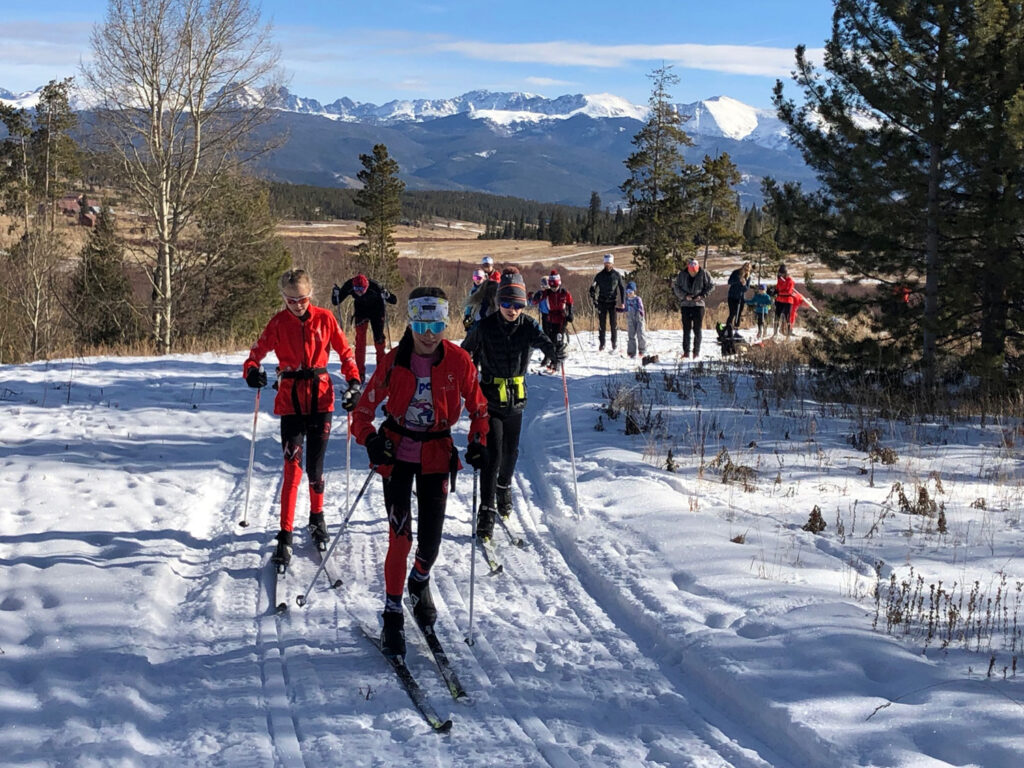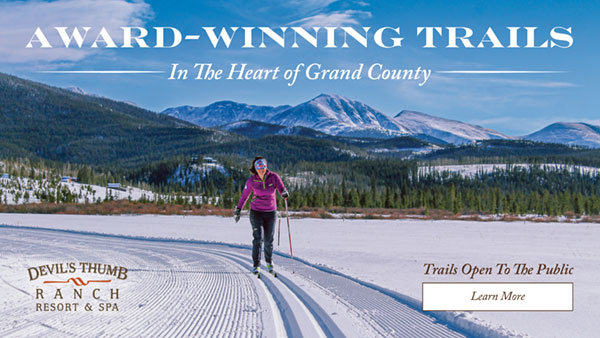Well, the 2021-2022 snow season is not exactly off to a gangbuster start. The 4-6” of light, fluffy snow that graced our trails the day before Thanksgiving may have been low in density, but it did a lot to spruce up the existing base, where there was one. It gave skiers an opportunity to plie their kick and glide on mown grassy fields and parks, where risk of damage to bases is negligible. Even some of the trails in the upper reaches of creek beds were considered rock-ski-optional, as long as you were aware of what thin spots, lurking beneath the fresh white coating, needed to be avoided on the way there.

Trailheads were intermittently busy over the holiday, with multiple modes of travelers getting out for some healthy outdoor spiritual and physical rejuvenation. As a result, the trail surfaces are getting a bit packed and lightly churned near the trail heads, but as you get further out into deeper snow, the walkers’ tracks dwindle and nicely set skier-made tracks can be enjoyed. Thankfully, most people don’t really like to make post-holes, so for now, ski tracks in the deeper snow that is found in the shadowy hollows have been holding up.
A long stretch of fair but dry weather is anticipated for as far as we can see into the future, making it nice to get outside, but that searing sunshine has been, and will continue to be brutal on the thin snow cover. Any little dark spot on the white trail surface expands rapidly where it is exposed to sunshine, and trails that had been well-covered a couple of days prior, become land-mine fields, waiting to catch a ski base unexpectedly. Shaded snow does not have this problem, at least to the same degree, and long stretches can be found that continue to hold powder. With each cycle of daily warming and nightly cooling, even this snow ages, and the white cotton and sharp crystalline stellar dendrites (6 pointed, star-like snowflakes) that fell before Thanksgiving, become more rounded and are well on their way to becoming the granular form we know as “old snow”. For the handful of people who still use kick wax, this means using a slightly softer wax in the kick pocket, thus enabling the skier to get a better grip on the snow. Matching the conditions with the right kick wax is a dying art, with waxless skis becoming even more prevalent and better-performing due to the reintroduction of strips of skin or unidirectional, synthetic fur attached to the ‘kick zone’ of the ski. Nevertheless, hitting the wax is a satisfying and nearly magical experience. Being able to grip the snow as well as one would like, and to get unhindered glide at the same time is a sublime sensation that waxless skis have yet to match.
So for now, if we want to keep our ski season moving forward on snow, we will have to look a little harder, walk a little further and dance a little more, hoping for snow to come relieve our anticipation sooner than later.
Happy trails!




